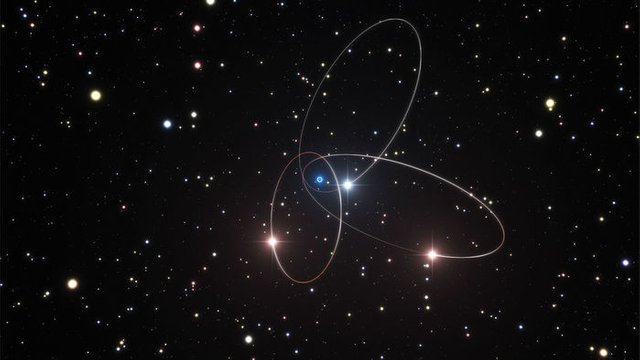Star Hurtling Toward Massive Black Hole May Seal Deal For Einstein’s Theory Of General Relativity

Albert Einstein’s theory of general relativity has passed a multitude of tests over the past century, but physicists remain unsatisfied. That’s because it has never been matched up against a strong gravitational field, like that of a supermassive black hole. Now, a team monitoring a star on its way to a close encounter with the giant black hole at the center of our galaxy says early signs hint that the 102-year-old theory will once again hold up.Observing stars close to the black hole known as Sagittarius A* (Sgr A*) is extremely difficult because it is 26,000 light-years from Earth and shrouded in a cloud of gas and dust. Astronomers have to use big telescopes that are capable of collecting infrared light, which can penetrate the murk. But over the past few decades, researchers have tracked the paths of a handful of stars as they race around Sgr A* at high speed. From those paths, they can deduce not only the existence of the supermassive black hole, but also its mass: four million times that of the sun.Those studies did not invoke general relativity because in most situations it only differs from Newton’s theory of gravity in subtle ways. To put Einstein to the test requires tracking orbits with extreme precision to tease out those minute differences. The closest known star to Sgr A*, dubbed S2, is the most likely to show signs because it gets so near. Every 16 years, its highly elliptical orbit takes it in close to the black hole—about four times the distance between the sun and Neptune. During its last close encounter, in 2002, astronomers didn’t have the instruments to measure it accurately enough. But they’re ready for the next pass in mid-2018.
In the run-up to the big event, astronomer Andreas Eckart of the University of Cologne in Germany and his team sought to map out the orbit of S2 as accurately as possible with data gathered over more than 2 decades using the European Southern Observatory’s Very Large Telescope (VLT) in Chile and observations made by other groups. It was “tedious work,” says Eckart, but their efforts show that S2 is already deviating from a Newtonian orbit, and the values are “extremely close to the expected values” predicted by general relativity.